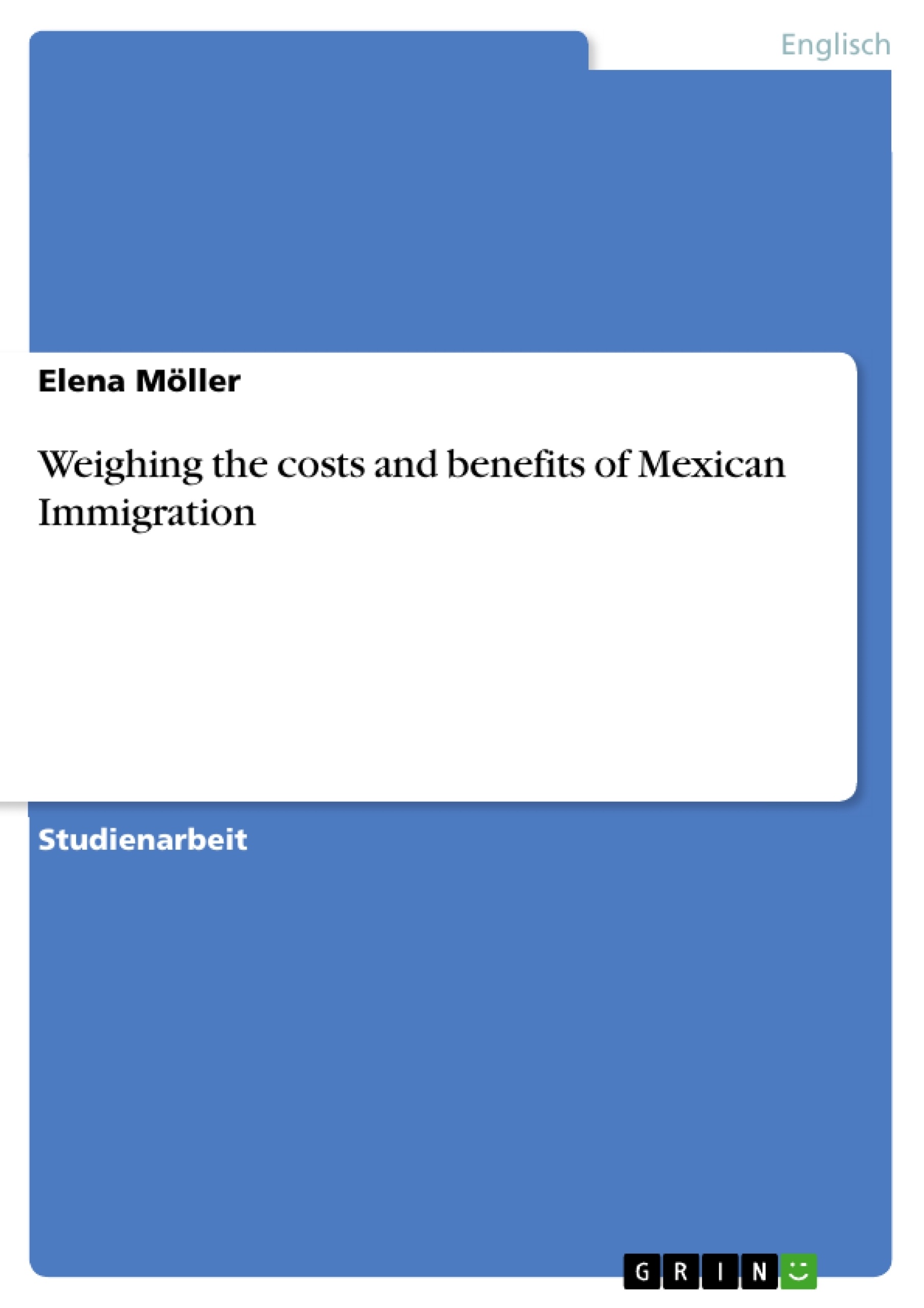The topic of immigration is a thorny issue in the American society. Specifically, the issue of illegal immigration is a burning issue. A record 12.7 million immigrants lived in the United States in 2008, a 17-fold increase since 1970. Mexicans now account for about one third of all immigrants living in the United States, and more than half of them are unauthorized . Looking at these statistics it is agreeable that Mexicans are representing the most noticeable immigration group in the U.S. and compared to other minority groups are of most greatness to American society. By thinking of Mexican Americans today the most discussed question arises. Are they burden for the country or simply a source of cheap labor? In 2002 the book with intriguing name “The Death of the West” was published and immediately caused contradictory responses and recognition at the same time, connected to the burning issues published in this book. The book is written by the well known American politician Patrick J. Buchanan, the former main adviser of U.S. Presidents Richard Nixon and Ronald Reagan and devoted to the analysis of hazards representing deadly threats to the existence of the western civilization. The mass immigration, caused by requirement of labor in the developed countries, is one of those hazards. According to the author the fact that an overwhelming part of the immigrants, coming to these countries, are representatives of other races, religions and cultures can change not only ethnic structure of the population, but also the historically developed shape of the West as a whole, its character and foundations. Mexicans, coming to the U.S., in many cases illegally, represent that mass immigration and because of their high number, raise some doubts in American society, whether they are useful or rather harmful. In this paper I will compare two controversial issues regarding Mexican immigration group. On the one side I will consider Mexicans as a threat to the United States, on the other side I will count them as an important source of labor, and therefore try to understand their role and current social status in American society today. I will also take a closer look at the historical backgrounds and general facts forcing them to leave their homeland.
Inhaltsverzeichnis
- INTRODUCTION
- HISTORY OF MEXICAN IMMIGRATION
- UNDERSTANDING MEXICAN IMMIGRATION
- SOCIOECONOMIC STATUS OF MEXICANS IN THE U.S.
- NATURALIZATION RATES
- EDUCATIONAL LEVEL
- INCOME RATES
- LEGAL VS. ILLEGAL IMMIGRATION
- DEBATE ON ILLEGAL IMMIGRATION
- ARGUMENTS FOR ILLEGAL IMMIGRATION
- ARGUMENTS AGAINST ILLEGAL IMMIGRATION
- FUTURE TRENDS
- CONCLUSION
- BIBLIOGRAPHY
Zielsetzung und Themenschwerpunkte
Diese Seminararbeit befasst sich mit der Geschichte und den sozioökonomischen Auswirkungen der mexikanischen Einwanderung in die Vereinigten Staaten. Sie analysiert die historischen Hintergründe der Einwanderung, die rechtlichen und wirtschaftlichen Rahmenbedingungen sowie die gesellschaftliche Integration von Mexikanern in den USA. Die Arbeit beleuchtet die Debatte um legale und illegale Einwanderung und untersucht die Auswirkungen der Einwanderung auf die amerikanische Gesellschaft.
- Historische Entwicklung der mexikanischen Einwanderung
- Sozioökonomische Situation mexikanischer Einwanderer in den USA
- Debatte um legale und illegale Einwanderung
- Auswirkungen der mexikanischen Einwanderung auf die amerikanische Gesellschaft
- Zukünftige Trends der mexikanischen Einwanderung
Zusammenfassung der Kapitel
Das erste Kapitel führt in das Thema der mexikanischen Einwanderung in die Vereinigten Staaten ein und stellt die Relevanz des Themas dar. Es beleuchtet die aktuelle Situation der mexikanischen Einwanderung und die Debatte um die Auswirkungen auf die amerikanische Gesellschaft. Das zweite Kapitel befasst sich mit der Geschichte der mexikanischen Einwanderung in die USA. Es analysiert die historischen Hintergründe, die zu den Einwanderungsströmen geführt haben, und beleuchtet die verschiedenen Phasen der Einwanderung, von den frühen Siedlungen bis zum Bracero-Programm. Das dritte Kapitel untersucht die sozioökonomische Situation mexikanischer Einwanderer in den USA. Es analysiert die Naturalisierungsraten, das Bildungsniveau und die Einkommensverhältnisse mexikanischer Einwanderer und vergleicht diese mit den entsprechenden Daten der Gesamtbevölkerung. Das vierte Kapitel befasst sich mit der Debatte um legale und illegale Einwanderung. Es analysiert die Argumente für und gegen illegale Einwanderung und untersucht die Auswirkungen der illegalen Einwanderung auf die amerikanische Gesellschaft.
Schlüsselwörter
Die Schlüsselwörter und Schwerpunktthemen des Textes umfassen die mexikanische Einwanderung, die Geschichte der Einwanderung, die sozioökonomische Situation von Einwanderern, die Debatte um legale und illegale Einwanderung, die Auswirkungen der Einwanderung auf die amerikanische Gesellschaft und die zukünftigen Trends der Einwanderung. Der Text beleuchtet die komplexen Herausforderungen und Chancen, die mit der mexikanischen Einwanderung verbunden sind, und bietet einen umfassenden Überblick über das Thema.
- Quote paper
- Elena Möller (Author), 2010, Weighing the costs and benefits of Mexican Immigration, Munich, GRIN Verlag, https://www.grin.com/document/149892



